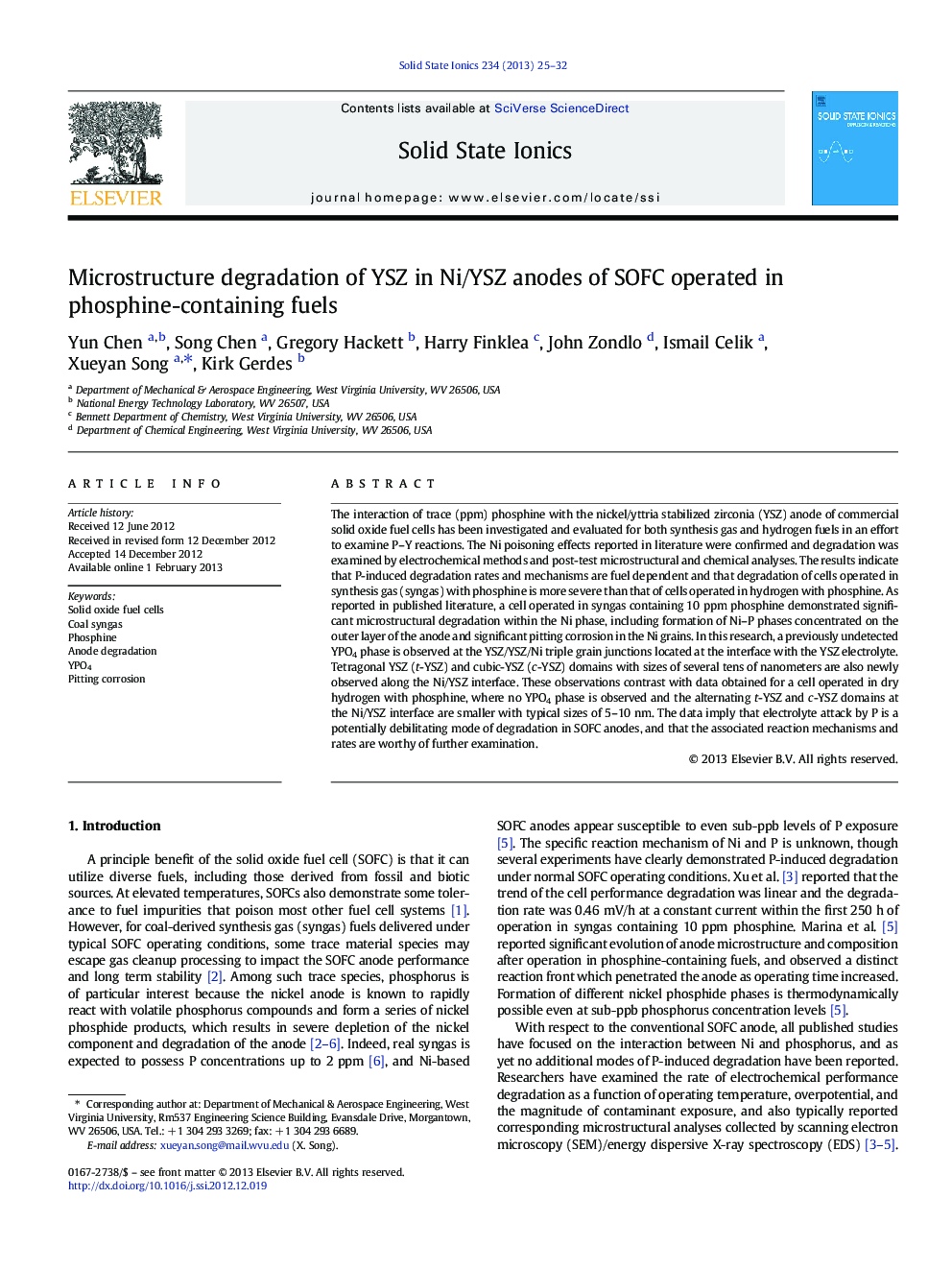| کد مقاله | کد نشریه | سال انتشار | مقاله انگلیسی | نسخه تمام متن |
|---|---|---|---|---|
| 1296779 | 1498305 | 2013 | 8 صفحه PDF | دانلود رایگان |

The interaction of trace (ppm) phosphine with the nickel/yttria stabilized zirconia (YSZ) anode of commercial solid oxide fuel cells has been investigated and evaluated for both synthesis gas and hydrogen fuels in an effort to examine P–Y reactions. The Ni poisoning effects reported in literature were confirmed and degradation was examined by electrochemical methods and post-test microstructural and chemical analyses. The results indicate that P-induced degradation rates and mechanisms are fuel dependent and that degradation of cells operated in synthesis gas (syngas) with phosphine is more severe than that of cells operated in hydrogen with phosphine. As reported in published literature, a cell operated in syngas containing 10 ppm phosphine demonstrated significant microstructural degradation within the Ni phase, including formation of Ni–P phases concentrated on the outer layer of the anode and significant pitting corrosion in the Ni grains. In this research, a previously undetected YPO4 phase is observed at the YSZ/YSZ/Ni triple grain junctions located at the interface with the YSZ electrolyte. Tetragonal YSZ (t-YSZ) and cubic-YSZ (c-YSZ) domains with sizes of several tens of nanometers are also newly observed along the Ni/YSZ interface. These observations contrast with data obtained for a cell operated in dry hydrogen with phosphine, where no YPO4 phase is observed and the alternating t-YSZ and c-YSZ domains at the Ni/YSZ interface are smaller with typical sizes of 5–10 nm. The data imply that electrolyte attack by P is a potentially debilitating mode of degradation in SOFC anodes, and that the associated reaction mechanisms and rates are worthy of further examination.
► NixPy are formed in samples operated in syngas or hydrogen containing phosphine.
► Pitting corrosion of Ni is observed in syngas-fueled, not in H2 fueled samples.
► A YPO4 secondary phase is observed only in the syngas/phosphine system.
► Y enrichment/depletion occurs and t-YSZ ribbons form along the Ni/YSZ boundaries.
Journal: Solid State Ionics - Volume 234, 7 March 2013, Pages 25–32